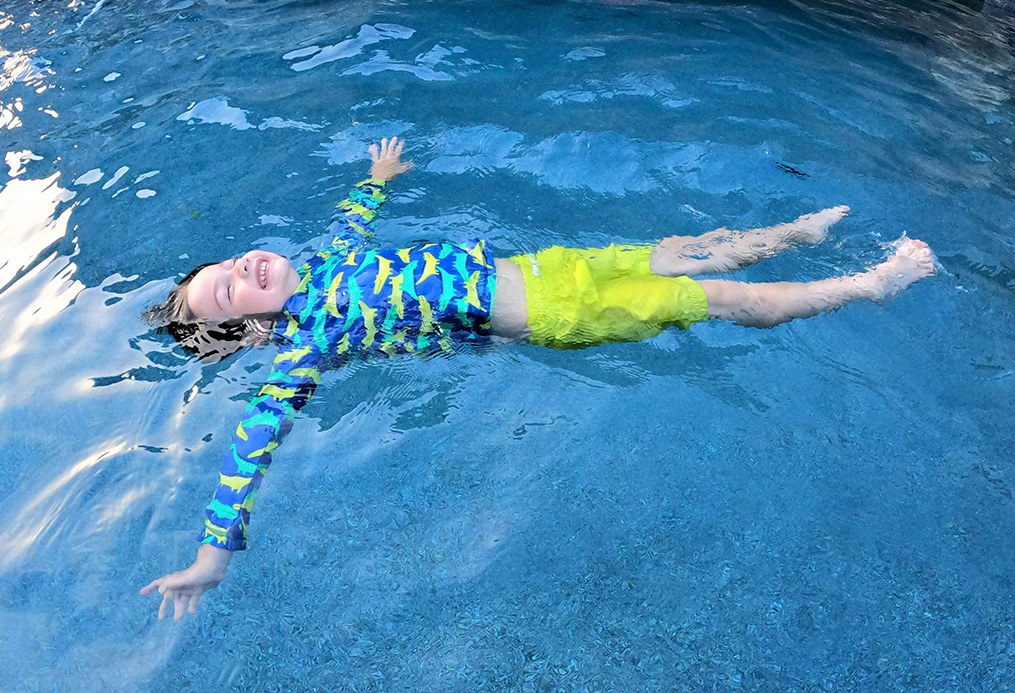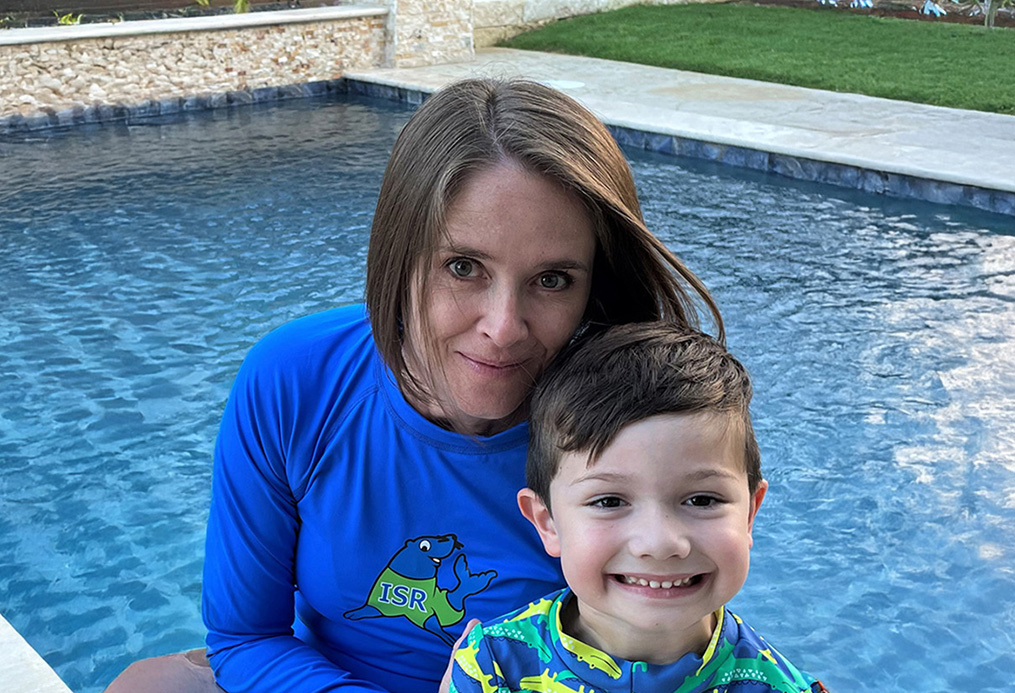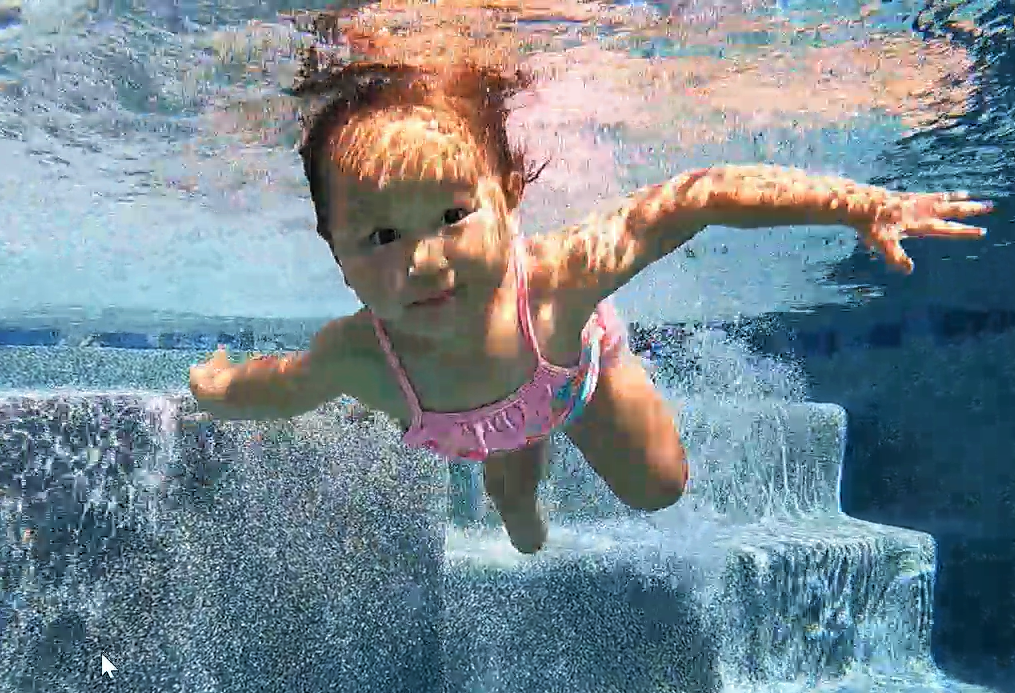Why ISR?
Founded in 1966 by Dr. Harvey Barnett, ISR is now the global leader in the industry it pioneered: survival swimming lessons for infants and young children. Our team of over 450 highly trained ISR Instructors provides the safest and most effective survival swimming lessons available. The ISR Self-Rescue® instruction our students receive today is the product of over 50 years of research and achieves unparalleled results.
Today, our mission, “Not One More Child Drowns,” is the foundation of everything we do and is the driving force behind ISR’s employees, our independent ISR Instructors, and our major corporate partnerships. We believe the successful prevention of the leading cause of accidental death for children under the age of 4 in the U.S. will require a large group of caring and capable professionals whose sole focus is to save lives. To date, we have delivered more than 19,000,000 ISR Self-Rescue® lessons and saved more than 800 lives.
Safety

This is ISR’s number one priority for your child. Prior to beginning lessons, your child’s unique medical history is reviewed by a team of medical professionals to identify any potential health issues that may affect your child’s lessons and safety. During lessons, ISR’s protocols have allowed for more than 8 million lessons to be safely delivered by individually certified Instructors. Your child is not the only one learning during lessons. ISR’s program includes comprehensive parent education on aquatic safety and drowning prevention.
Qualified Instructors

Your child will learn survival swimming skills from a well-trained and highly qualified Instructor using principles that have been researched, proven, and tested for more than 50 years. Each certified ISR instructor completes a rigorous 8-week in-water and academic training course (over 200 hours) and participates in a highly specialized annual recertification to maintain the highest level of safety and caliber of instruction.
Results

The protocols and ongoing education your Instructor receives ensures that your child, at the end of lessons, will be able to successfully demonstrate the age appropriate survival sequence, including a roll-back-to-float and/or a swim-float-swim. Every student checks out in both summer and winter clothing, as accidents can happen any time of the year. Each ISR Instructor safely and gently guides your child through the process of mastering his/her survival skills. These skills serve as a foundation for a lifetime of fun, safety, and enjoyment in and around the water.
What Your Child Will Learn
ISR Self-Rescue™ Swim Lessons are for children ages 6 months to 6 years and are completely one-on-one (there will never be another child in the water with your child). Lessons are conducted 5 days a week Monday through Friday at a maximum of 10 minutes for approximately 6-8 weeks. As every child is different and ISR is tailored to your child’s needs, some children finish earlier, while others may need a bit longer. Once fully skilled, every student must perform these skills in both summer and winter clothing to check-out. (Please note that 6-month-old babies must be sitting completely unassisted to be approved to begin lessons).
Rollback to Float
Infants to Early Walkers
Babies who can sit unassisted and crawl, generally 6-12 months old, learn the ISR Self-Rescue® skill of rolling onto their backs to float, rest, and breathe and maintain this position until help arrives.
Swim - Rollback to Float
Early Walkers
Children between 12 months and 18 months may not yet be developmentally ready to do the entire swim-float-swim sequence. This will be assessed with parents individually. These students learn to hold their breath, swim with their head down and eyes open, roll onto their back to float, rest, and breathe and maintain this position until help arrives.
Swim - Float - Swim
Solid Walkers
The swim-float-swim sequence teaches your child to hold their breath, swim with their head down and eyes open, roll onto their back to float, rest, and breathe, then roll back over to resume the swim-float-swim sequence until they reach the side, steps, shoreline, or help arrives.
Refreshers
ISR Refresher lessons play a vital role in maintaining and updating your child’s aquatic survival skills and are designed to fine-tune your child’s existing ISR Self-Rescue™ skills to meet the demands of their growing bodies. Refresher lessons will allow them to make adjustments to their float and strengthen their swim. Refreshers are still 10 minutes 5 days a week, but typically for 2-4 weeks.
Maintenance
Once the child is fully skilled, these lessons are available on occasion for fine-tuning your child’s skills. These can be scheduled at different intervals (once or twice a week or month, etc.) as recommended by the Instructor.
Instructor

My name is Melissa Vasconcelos and I was born and raised in Portland, Maine. I graduated from the University of Maine with a Bachelor’s in International Affairs and Spanish. My husband and I have four precious children and one sweet dog.
We lived in Franklin, Tennessee for 10 years before moving here to The Colony, Texas in early 2015. Unbeknownst to me, it was upon moving here to Texas that my ISR story truly began. Unfortunately, shortly before moving into our home, a drowning tragedy had occurred right up the road from us. To this day, every time I pass that home, my heart aches for that family that lost their precious toddler to drowning. One year later, we became pregnant with our fourth child. I knew that with so many pools in backyards, living on Lake Lewisville, and so many canals, fountains, three community pools and other water features in our beautiful neighborhood, the only option for swim lessons for our son would be ISR.
Our little guy began ISR at 15 months old and I was absolutely amazed by the program! As he approached 4 years old and me being home for 16 years raising our children, it was time for me to start thinking about going back to work. It was during one of his lessons that the light bulb went off and I decided that becoming a certified ISR Instructor was the only thing I wanted to do. Being able to teach babies and toddlers these incredible lifesaving skills and giving other parents the same peace of mind that I enjoyed through the ISR program, is the most rewarding job ever.
Watching little ones learn to float never gets old and gives me happy tears every time! Thank you for trusting me with your child, and I know you, too, will shed those happy tears watching your little one gain these invaluable lifesaving skills! Together, we can all help ensure ISR’s goal that “not one more child drowns”.
Testimonials
FAQs
Your Title Goes Here
Your content goes here. Edit or remove this text inline or in the module Content settings. You can also style every aspect of this content in the module Design settings and even apply custom CSS to this text in the module Advanced settings.
Will my child need additional lessons?
Based on our research, we know that refresher lessons are important because children change so much both cognitively and physically during the first 4-5 years of life. It is important that their water survival skills grow with their bodies. Frequency depends on the child’s age, growth rate, skill level and confidence level. The goal of refresher lessons is to help your child adjust his/her new body size and weight to his/her existing skill level. Your Instructor will work with your child to help fine-tune his or her aquatic experience to assist with building efficiency, which will result in self-confidence. This is especially important if your child has not been able to practice any appropriate aquatic skills between seasons.
Are ISR Self-Rescue® swimming lessons safe for infants and young children?
YES! ISR is dedicated to safety and maintaining numerous safety protocols to promote safe lessons. Your child’s health and well-being are our highest priority and are closely monitored on a daily basis. In addition, your child’s medical and developmental history is a mandatory part of the ISR national registration process, all of which is held strictly confidential. All ISR Instructors undergo an intensive and rigorous training that far exceeds any other training program of this kind. Each ISR Instructor is also required to attend a yearly recertification symposium that includes quality control as well as continuing education. Your education in the area of aquatic safety for your entire family is an integral part of your child’s lessons. You will receive access to the “Parent Resource Guide”, written by Dr. Harvey Barnett and JoAnn Barnett, which will inform you of every aspect of swimming for infants and children. With research, you will find that ISR is not only the safest survival swimming program, but also the most effective for teaching infants and young children.
Why are lessons 5 days per week and for only 10 minutes?
The reason for this is multifaceted. First, repetition and consistency are crucial elements of learning for young children. Research shows that short, more frequent lessons result in higher retention. Second, most children have fairly short attention spans and will not be able to focus on the task for longer than the 10-minute timespan, and we want to take advantage of the best time for learning. A third reason is that, though the pool temperature is maintained at 78-88 degrees, the temperature is still lower than your child’s body temperature. Lessons are work and, therefore, your child will also be losing body heat. Instructors check students regularly for temperature fatigue since this is an indicator of physical fatigue.
How much will my child remember from his initial lessons?
Like any physical skill, children don’t “forget” the skills, but will need to adjust the skills to account for their physical growth. In addition, children will explore and may pick up bad habits watching other children or with interference like floating in a bathtub or playing on the steps. As your child goes through lessons, you will begin to understand, through communication with your Instructor, what activities may interfere with his/her learned ISR Self-Rescue® skills. Contacting and/or returning to your Instructor in a timely manner is imperative to maintaining effective habits.
Why do you have the children swim in clothes?
Because most of the children who fall in the water do so fully clothed, we want our students to have experience with such a situation. If a child has experienced the sensations of being in the water in clothing prior to an emergency situation, he/she is less likely to experience panic and be able to focus on the task at hand. If you have ever jumped in the water with clothes on, then you know that there is a significant difference in weight and feel with clothes as opposed to a bathing suit.
Why does it take 6-8 weeks for my child to learn this?
The 6-8 weeks is an estimate that is based on the average time in which it takes most children to learn these survival skills. Every child is unique, and ISR’s Self-Rescue® program is specifically designed based on your child’s individual strengths and needs. It is important to realize that this is an average, which means that some children will actually finish more quickly, while others will need more practice. ISR is dedicated to safety and, therefore, we want to provide your child with the time and best opportunity to become proficient in his/her survival skills. We will always honor your child’s individual needs.
Why do we have to bring 3 towels every day?
In a word: safety. There is truly a reason for each towel. The bottom towel protects your child from anything that could be on the pool deck: germ safety. The second towel protects the deck from anything that might come off your child. The third towel is to dry and warm your child.
Are children tired after lessons?
The lessons are only 10 minutes long each day. The children work hard at learning to swim, so we teach them to lie down on their towel and rest for a few minutes after each lesson. They are temperature fatigued, not yet physically fatigued, and they need to readjust to gravity.
You have registration forms, updates, BUDS sheets, and sometimes need medical releases to allow a child to participate in this program. Why is there so much paperwork? Who looks at all this stuff?
SAFETY. At ISR, safety will always come before convenience. While it is a fair amount of paperwork, any program that involves the safety and well-being of infants and young children needs to be conscientious and very thorough. The ISR medical team, consisting of a non-staff team of registered nurses, review the information from the registration form and provide feedback to your child’s Instructor so that he/she can provide the safest possible lessons for your child.
Why can’t children have apples?
This is often a tough one for parents because many children are introduced to apples early and most juices contain some apple juice as an ingredient. The reasons that you don’t feed your child apples for the duration of lessons is because apples cause gas. Apples metabolize at a temperature of 104 degrees. This is the same temperature that they ferment at. This gas causes the child to be uncomfortable and feel full, and no one works well on a full stomach in the water.
Why can’t children have anything to eat or drink for 2 hours before lessons?
First off, no one works well in the water on a full stomach. Your child is going to be working hard in lessons. We want them to be comfortable. In addition, when children are first learning to hold their breath, they often swallow air. If you get a lot of air in your stomach, it will often come out as a burp. If there is food in there as well, the air can get under that food and bring them up together. That isn’t fun for any of us, especially the baby. Once again, we want to set the child up for success. In this case, we want them to be comfortable so they can focus on the task at hand.
Can you really teach a child who is not verbal how to swim?
Yes! Consider that children learn to sit, crawl, and walk before they learn to speak. Because we teach through sensorimotor learning (the way in which they learn to sit, crawl, and walk), verbal skills are not required for a child to acquire ISR Self-Rescue® skills. We are able to communicate with our students through touch and positive reinforcement while striving to set our students up for success every step of the way.
Could my child vomit during lessons?
Our goal is that no child ever vomits. However, it does occasionally happen. Most often, this is due to feeding issues. We ask parents to avoid feeding children for 1.5-2 hours prior to lessons because having food in the stomach while learning breath-holding can cause discomfort. When a child is first learning to hold his/her breath, he/she will often swallow some air, which in turn can cause big burps. If a burp gets under food remaining in the tummy, it can cause vomiting. For this reason, we ask parents to maintain B.U.D.S. sheets accurately and follow the eating guidelines outlined for your children.
Do parents have to leave during the lessons?
No! You are truly the best cheerleader your child could have. Your positive support and encouragement are invaluable to creating an effective learning environment for your child.
Why don’t parents participate in the water during the lessons?
We do not want the baby to initially associate the water with the love, attention, and affection of the parent while in the water. Also, it takes incredible concentration and objectivity to teach the baby how to respond to an aquatic emergency, and our research shows that parents often find it too difficult to be objective to be effective teachers with their own children in the water.
Will my child fear the water because of lessons?
There is an important difference between being fearful and being apprehensive because you are not yet skilled in a new environment. ISR is not like traditional swim lessons; it is a drowning prevention program that teaches survival swimming. Sometimes as a parent, you make choices for your child’s safety, like sitting in a car seat, because you know they are important. The same can be said for ISR. Once competent in their skills, many children cannot be dragged away from the pool, as they are having entirely too much FUN!
Why do the babies cry?
Babies don’t yet have the verbal skills to express themselves, and crying is a completely normal reaction for a young child who is in a new and challenging situation with a completely new person (the Instructor). However, as the child’s skills increase in the pool, the fussing will decrease. As the child’s skills increase, they gain both competence and confidence, and those tears often turn to smiles!
What does it mean that ISR lessons are an “additional layer of protection”?
Constant, undivided, 100% effective supervision would be the only sure way to eliminate drowning. Unfortunately, as parents, we know this simply is not realistic. Infants and toddlers love to explore, and with everything else that goes on in our lives, as parents, we can get distracted. A moment’s inattention can allow a child to move out of our line of sight. This is not a failure, it is just part of our busy lives.
This brings us to the next layer of protection: pool fences. Pool fences exist so that, should a child escape a parent’s supervision, there is a barrier between the child and the pool. We know that children are drawn to water, but we don’t want them to be able to get to the water alone. Unfortunately, pool fences are only effective if they are used correctly EVERY time. Because many are not set up to be self-closing and self-latching, they allow for a high likelihood of human error. Even if they are self-closing and self-latching, if there is not regular maintenance, then they can fail.
Another aspect that is often highly underestimated is the intelligence of children. A child needs only a chair or a small table to climb on to emulate opening the gate and/or climbing over pool fencing, rendering even the best pool fence useless. The fact that drowning is the leading cause of accidental death for children under the age of four is a grim testament to the fact that traditional approaches can, and do, fail. ISR’s Self-Rescue® program exists so that, when other protective measures break down, your child can save himself.
What is the ISR position on floaties and life jackets?
Flotation devices give children a false sense of security and hold them in postures (vertical) that are not compatible with swimming and floating skills (horizontal posture). If a child learns that he can jump in the water and go into a vertical posture and he will be able to breathe, he is getting the wrong idea about that environment. Children, who cannot swim, should not be allowed to learn that it is safe to play in the water while relying on a crutch (floatie). Life jackets must be worn in, about, or around the water when there is the potential for a submersion as a result of an accident (i.e. a boat collision or capsize). They are NOT a substitute for the ability to swim or for adult supervision.
